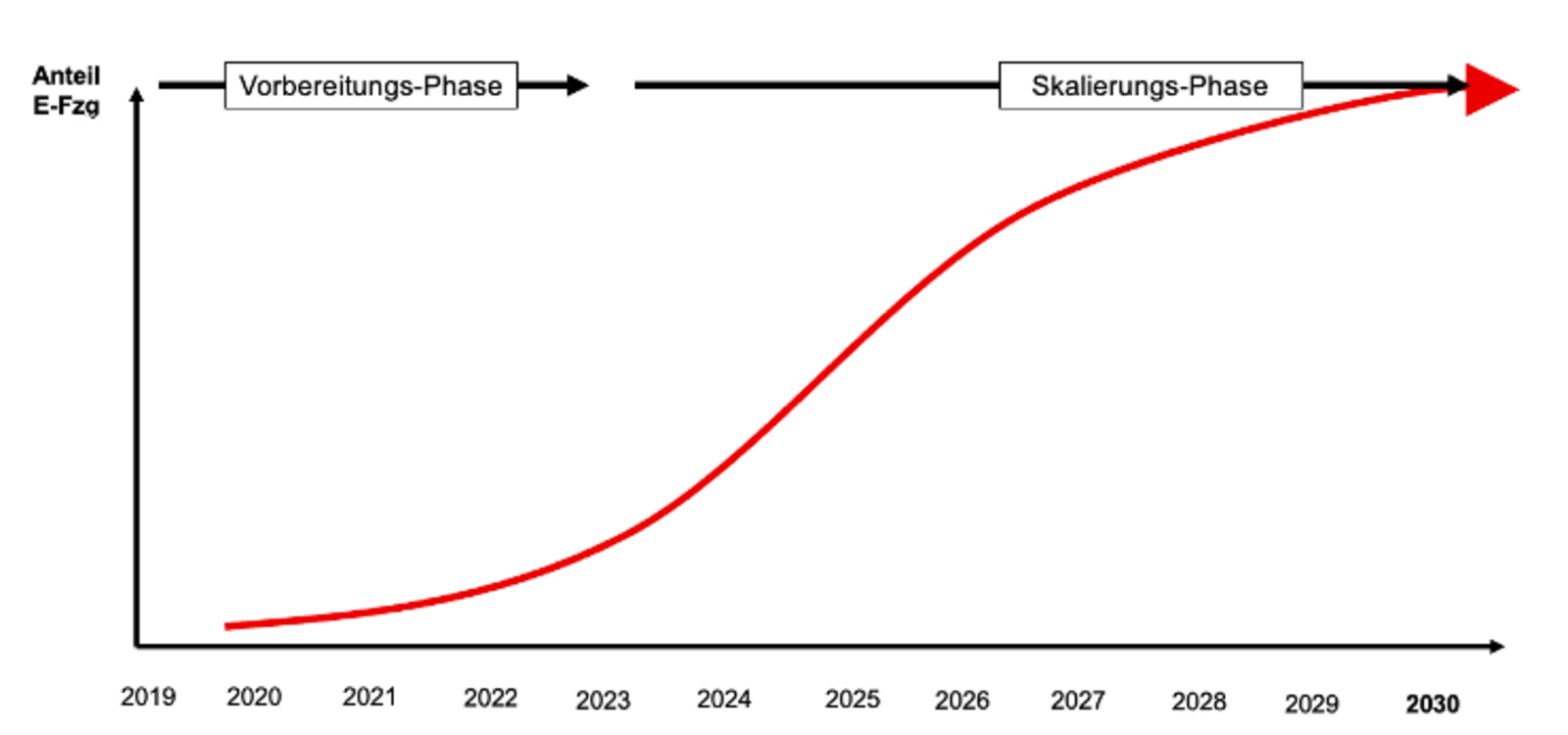Mobility’s aiming to electrify its entire vehicle fleet by 2030. That’s 3’000 vehicles spread across 1’500 locations nationwide Customers already have access to e-vehicles throughout Switzerland, and the number is on the rise: “We’ll soon be rolling out the 500th electrified Mobility station,” announces Pascal Barth. At the tender age of 34, the electrical engineer is responsible for planning and delivering Mobility’s charging infrastructure. Not an easy task with 1’500 locations on his books. “Converting the existing infrastructure is a Herculean task.”
Plenty of experience with car sharing, but…
To achieve its ambitious goals, Mobility is also investing in its workforce. “We have a lot of experience with car sharing, but not so much when it comes to e-mobility,” says Barth. That said, the situation is steadily improving: recent years have seen the cooperative recruit specialist electricians, and its area managers and other roles are also being trained up.
Mobility wants not only to get its workforce up to speed, but also the people and organisations who own the parking spaces. “Converting Mobility stations to accept e-vehicles is particularly challenging because we don’t own any of those spaces. We’re merely tenants,” explains Barth. It means that Mobility cannot decide unilaterally whether and when a parking space is converted: “We’re dependent on the goodwill of the owners.” Mobility has its work cut out when it comes to converting a parking space. The main reason is that – like converting the vehicle fleet – doing so doesn’t come cheap. The cost per location varies between 700 and 20’000 francs – money that typically has to be coughed up, at least in part, by the owner.

Six months per parking space
Mobility will be conducting negotiations with some 1’000 owners over the next few years. These can be private individuals or companies, public authorities and organisations. “Our interlocutors range from state-owned enterprises to simple home owners,” says Barth. Or to put it another way: “We have 1’500 locations – which means 1’500 custom solutions.” Compared to a conventional parking space, establishing an electrified location is far more complex and time-consuming. This is reflected in the length of time it takes Mobility to acquire a parking space for electrification. In the case of a conventional space, it usually takes four weeks from initial contact with the landowner to delivery of the Mobility vehicle. For electrified spaces, Mobility currently reckons on that process taking at least six months to complete – some six times as long.
Technology the least of the challenges
“Some contract partners really welcome having their parking spaces electrified. Others are less enthusiastic,” says Barth. This is understandable: the conversion comes at a cost for owners. Once Mobility has reached an agreement with an owner, various capital outlays are required, including for procuring the charge point hardware and installing and commissioning the power supply. The site owner usually pays for the latter, with Mobility responsible for the hardware. “We do our best to make the conversion as cost-effective as possible,” says Barth. Ideally, the e-parking space should be close to a building so Mobility can tap into the the existing supply. From a technical standpoint, this is no big deal. “Pulling a few wires then hooking up a charge station is relatively quickly done.” The challenges in terms of financing and managing what is, in effect, a micro-project are much greater. But once they’re resolved, the cost of maintaining an e-parking space is not unreasonable. “We carry out a basic maintenance intervention once a year, plus a comprehensive inspection every five to ten years, which is mandatory for electrical installations located in the public realm.”

“Nothing will deter us from achieving our goal.”
While between 100 and 200 Mobility stations have been converted in each of the past three years, the curve is set to rise sharply in the coming years (see illustration). “We’re currently still building capacity, but from next year we’ll be able to let rip,” declares Barth. “We’re currently focussing on the largest and most frequented locations.”

Mobility achieving its ambitious goal depends not only on the owners of the parking spaces, but also on the political process. “As you would expect, we welcome the Federal Council’s stated wish to invest in the roll out of charge points to the tune of 180 million francs in the coming years.” Barth is also hopeful that municipalities and cities will be (even) more proactive going forward. Even if the challenges in terms of electrification are great, Barth says Mobility’s resolve is unshakeable. “We want to have decarbonised our vehicle fleet by 2030 – it’s a mission we’re putting our heart and soul into.”
Your comments will be posted within 24 hours.

Your comment